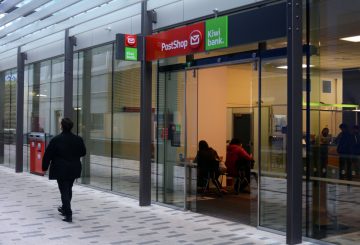前总理约翰·基爵士认为,政府需要拿出支票簿,而不是依靠恐惧策略让人们接种疫苗。
2008 年至 2016 年担任总理的约翰爵士说,疫苗接种是恢复正常状态的唯一途径,新西兰人可以出国旅行并在需要时返回。
他说,鼓励人们获得刺戳的激励措施是前进的最好方法。
“你必须转向一系列胡萝卜和棍棒。我认为恐惧不会起作用。
“推出 Shaun Hendy 并说 7000 人可能死亡是行不通的。
“在我看来,恐惧与接种疫苗的人一起工作,对未接种疫苗的人不起作用。
“如果你去看看香烟包和那些上面展示的人们器官的可怕照片-我认为那真的不是阻止人们吸烟的原因。我认为这是价格上涨的时候,你被拒绝在公共场所吸烟的能力。”
约翰爵士说,选择方案可能包括向前往难以到达地区的疫苗接种者提供赏金,或支付人们接种疫苗的费用。
他说,当封锁每周花费 10 亿美元时,向年轻人提供 500 美元的疫苗奖励并非没有道理。
约翰爵士还认为,应禁止未接种疫苗的人进入持牌场所,例如餐馆、酒吧和夜总会,甚至新西兰航空的航班。
“而且很快,我想你会发现这些年轻人,主要是没有接种疫苗的人,他们将很快接种疫苗,否则他们的生活方式将发生巨大变化。”
约翰爵士今天在星期日和星期日的《先驱报》上发表了一篇社论,呼吁与公众分享一项 “连贯的计划”,并表示政府应 “停止因恐惧而执政”。
约翰爵士写道:“目标不应该再是存在于一个自鸣得意的隐士王国中。”
在周日上午的 TVNZ Q+A 节目中,Covid-19 响应部长克里斯·希普金斯对约翰爵士的评论表示质疑。
希普金斯说:“我认为这是一项伟大的政治活动。”“约翰·基争论的许多事情已经发生了。
“我真的不同意他把新西兰描述为一个自鸣得意的隐士王国的看法。
“我认为这是对新西兰人的侮辱,他们实际上通过努力并在需要的时候尽早努力实现了世界上最高的自由率。”
约翰爵士在他的社论中批评了 MIQ 的分配要求,并说应该告诉新西兰人何时开放边界。
他还呼吁根据疫苗接种率为毛利人和太平洋岛屿的医疗服务提供者提供经济激励措施,如果在 12 月 1 日之前接种疫苗,则为 12-29 岁的人提供 25 美元的担保。




























































